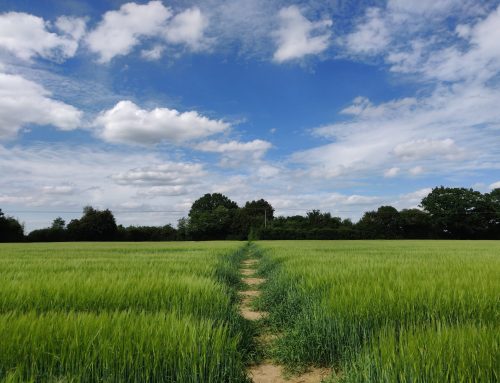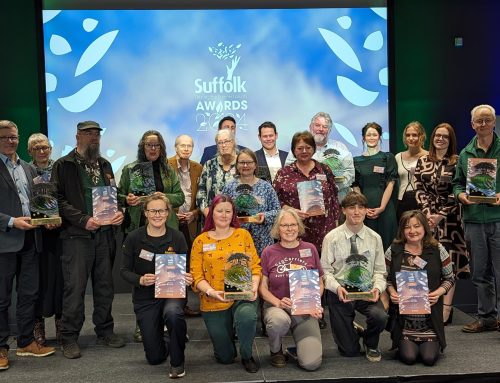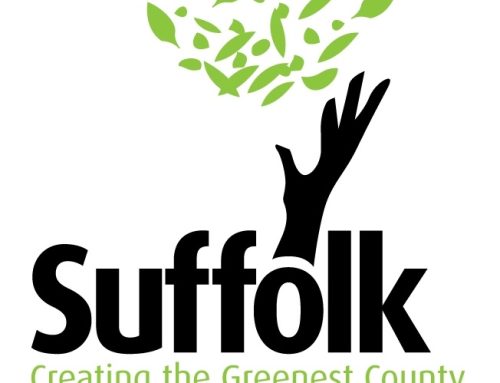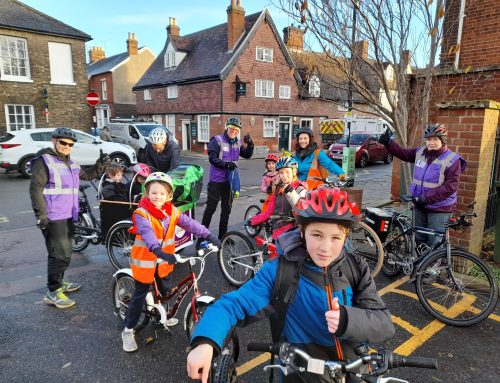[Source: Babergh and Mid Suffolk District Councils]
Two Suffolk councils have now begun trialling wildflower verges across their districts, as part of efforts to tackle biodiversity and climate change.
As part of Bees’ Needs Week this week, Babergh and Mid Suffolk District Councils are celebrating their wildflower verges getting underway. The step sees the councils reduce grass cutting in specific council-maintained areas to give existing wildflowers a chance to thrive.
Crucially, the flowers provide food for bees and other wildlife, while the longer grass provides them with shelter and helps keeps the ground cooler and less dry.
Initially, the grass is being left to grow to see which wildflowers already exist. The councils will then cut, and seed the areas with complimentary flower mixes as needed, in the Spring in a way that encourages more flowers to grow over coming years.
So far, trials have largely begun in Stowmarket and Sudbury, however, the councils will be continuing to expand into other areas over coming months, where it is safe to do so. For example, where the visibility of drivers isn’t affected. These areas will be marked with new signs to make residents and visitors aware.
In areas there they don’t have responsibility for maintaining land, the councils are also working with others, including town and parish councils. This includes as part of their trees, hedgerows and wildflowers scheme which is currently open for applications until 31 August, following a successful round last year with nearly 5,000 trees and hedgerow plants planted.
The schemes form part of the councils’ Biodiversity Action Plan, aiming to protect and strengthen the districts’ plant and wildlife for generations to come. It has seen the councils invest funds in new specialised mowing equipment, as well as a dedicated biodiversity officer, to ensure maximum environmental benefit.
The wildflower verges are also part of the councils’ project with the Design Council and LGA’s Design in the Public Sector programme, with residents being asked for their feedback both on the trial areas and for ideas on where they’d like to see more wildflower areas set up. Feedback can be sent to the councils’ biodiversity team at biodiversity@baberghmidsuffolk.gov.uk
Cllr Jane Gould, cabinet member for climate change, biodiversity, and sustainable transport at Babergh District Council, said:
“Supporting our local wildlife, such as bees, is key to achieving the aims of our Biodiversity Action Plan.
“We know many residents are keen for us to create more spaces for the benefit of wildlife. So, by introducing more wildflower areas across our district, both on our own land and by working with partners, we can help our pollinators to thrive.
“While reducing grass cutting might seem like a reduction in services for some, we’ve actually needed to invest in new cutting equipment, a dedicated biodiversity officer, as well as purchase millions of seeds. We feel this investment, while continuing to look after our open spaces just as carefully as before, is one worth making to ensure Babergh is a green and great place to live and work for years to come.”
Cllr Jessica Fleming, Mid Suffolk District Council’s cabinet member for environment, said:
“Creating more wildflower meadows is one of our priorities for biodiversity in Mid Suffolk, as well as increasing numbers of trees and hedges.
“Upping our tree coverage, and establishing wild spaces for bees as well as other insects and wildlife, is an important part of our Biodiversity Action Plan. We hope that by working with our towns, parishes, and residents, we can have an even greater positive impact on our local environment in the place we’re proud to call home.”
Introducing wildflower verges builds on steps already taken by the councils to support biodiversity in their patch, including:
- gifting well over 1000 trees to new parents through their Tree for Life scheme
- successfully securing a share of £150k with other Suffolk councils to plant around 3,000 trees in the county. 200 of these are located across Broom Hill in Hadleigh, Needham Lake in Needham Market, and Greens Meadow in Stowmarket and were dedicated to the Queen’s Green Canopy in Suffolk
- finalising mapping of existing and potential wildlife corridors, as well as a survey of the districts’ current tree canopy






